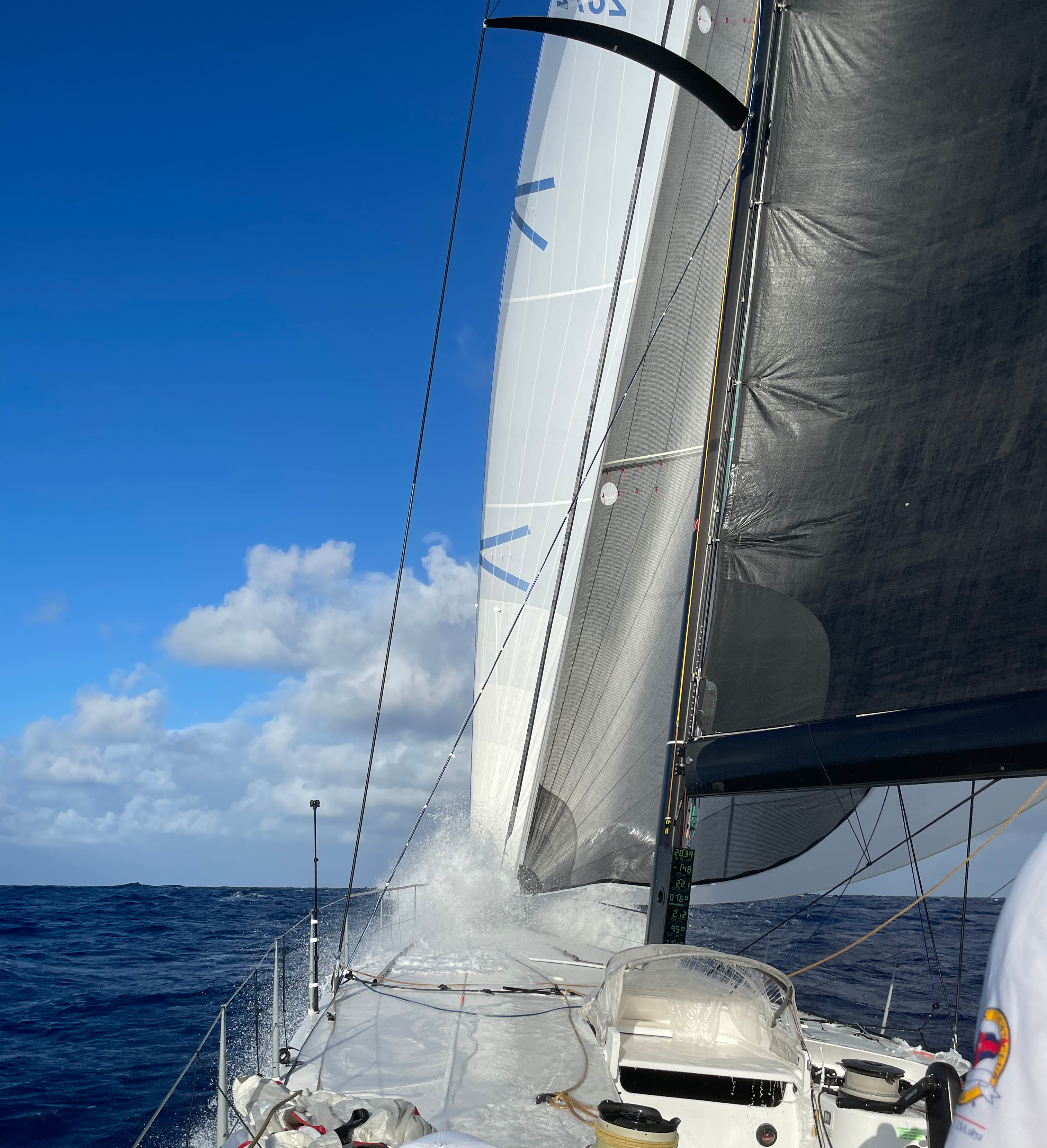Many of you asked how my race went after seeing my LinkedIn post a couple of weeks ago. I’ll say this about the race: we made it to Honolulu and boy was it exciting. You’ll notice I didn’t say we finished the race. Sadly, we retired 20 miles from the finish line with Diamond Head directly in front of us. I’ve been ocean racing most of my life and stood on the podium many times, but I’ve never retired from an ocean race. This was my first.
This race required a lot of determination, planning, and foresight. But as with any adventure, the unexpected came and tested our preparedness. What you think is going to happen doesn’t always happen. To put this in context, I’ve been ocean racing most of my life. I’ve won many races, but most importantly, I crossed the finish line every time…until now. We always know in the back of our minds that something can go wrong. Those who think about it plan for it, and those who don’t plan ultimately don’t succeed.
Whether you’re talking about ocean racing or mountain climbing (another favorite sport of mine), it’s a journey. In the case of mountain climbing, it’s not just getting to the top of the mountain—it’s everything that leads to getting to the top of the mountain and getting back safely once you hit the summit. A journey is a process—there’s the preparation, the action (the “doing it”), and all of the life experiences and stories that come with them. Each of these stages is equally important, both in the adventures I enjoy and in business. From planning to looking back and evaluating its success (or lack thereof), the metamorphosis of any event has a lot to teach us about risk management and preparedness. When you’re getting ready for such an endeavor, you make sure you have the right gear, maps, and tools. You spend time physically training. You make sure you have the right interdependent team because each person is counting on the other. And yet—storms come. Avalanches happen. Life is not predictable, and neither is business.
Preparedness & Risk Management
For several months, the crew spent time planning to make this race happen. Like any good journey, there’s a fair amount of anticipation. Each team member was establishing relationships with one another, working to know each other as partners and teammates, identifying skills and weaknesses. We were eager to be out on the open seas and push ourselves to win and see if we were as prepared as we thought we were.
The starting gun goes off, the real part of the journey begins. During our race, we sped across the Pacific and were met with pretty strong squalls and waves more than once. It was physically grueling—for four hours on and four hours off, twenty-four hours a day for many days in a row. We were rewarded for our hard work and preparation by being at the front of the pack. And then, at the very end of our race, just when we thought we were going to win, all hell broke loose in the middle of the afternoon. We were only twenty miles from shore. We had enough foresight and experience that we were able to get to land with a lot of help.
What if this had happened in the middle of the night, not twenty miles from shore but two hundred, or in the middle of the Pacific, 1,100 miles from land? What would we have done? When these things happen, it’s always good to take stock of where it went well and where it went wrong. It’s the same assessment you do in business, whether or not your strategy is effective, or even implemented correctly.
Learning to Effectively Plan
So what can a business leader learn from my 2,200-mile trek across the ocean? First, you have to plan for all potential outcomes, not just for your one desired outcome (standing on the podium holding the winner’s trophy). I think of all the times that my management team at Argo or the CEOs of the portfolio companies at Aquila just scratched their heads where I would push my team to explore alternatives beyond the obvious. It’s common sense—we must consider variables, so we can be prepared for whatever comes our way. So why is this preparation so commonly overlooked? That level of preparedness takes extra time. There’s always a reluctance to take the extra time needed to plan for outcomes that probably won’t, or are highly unlikely to happen (we refer to this as tail risk, or in Nassim Taleb’s words, “Black Swan” events). But on the off chance these outcomes do occur, they can be catastrophic in business.
I’ve discussed this in a previous blog, but it’s worth stating again: leaders must be prepared for all types of exogenous events. You have to have a contingency plan. The law of unintended consequences often comes into play. The leaders that have considered all outcomes and thoroughly prepared their teams are the most successful, and there’s plenty of empirical data to show it, whether you’re talking about the score at the end of a game, the financial results at the end of a quarter, or the time to finish a race. In the end, the best-prepared teams win.
Evaluating Risk
When you try to plan your business around extreme events, the cost of planning is more than the cost of the risk itself—so it’s a tradeoff. I reminded my team at Argo that you can’t rely on your models. You can’t hope that because the event is extreme, it won’t happen. The cost of paying attention is high, and your competitors often forego this preparedness for the short-term advantage. But if your business will be around for the long haul, you need to plan for extreme circumstances. It’s the tail risk that kills you (literally) or separates you from the rest of the pack.
So back to my sailing journey: imagine you’re twenty miles from the finish line of a 2,200-mile race. You’re already thinking about what you’ll eat for dinner and, in an instant, you’re wondering if you’re even going to make it to shore. We quickly went from race-mode to survival-mode. It was an incredible experience to watch highly trained professionals problem-solve under pressure and figure out a way to safety. The same goes for any company you’re a part of or business you invest in—you need to know the right team members are in the right positions at the right time. Anyone can create a strategy, but if you don’t have the right people in place (people you can trust), you simply won’t be effective when navigating stormy seas.
The good news? We safely made it ashore. The bad news? We missed dinner and we missed the podium. Fortunately, our story had a positive outcome. Not only did we end up in Honolulu safely, but we also spent a week together racing and learning a lot about ourselves and the seas. There were more risks we should have prepared for, but like all journeys, we’ll spend time afterward reflecting on what we think went well and how to better prepare for the future.
Read more for additional insights from Mark E. Watson III







